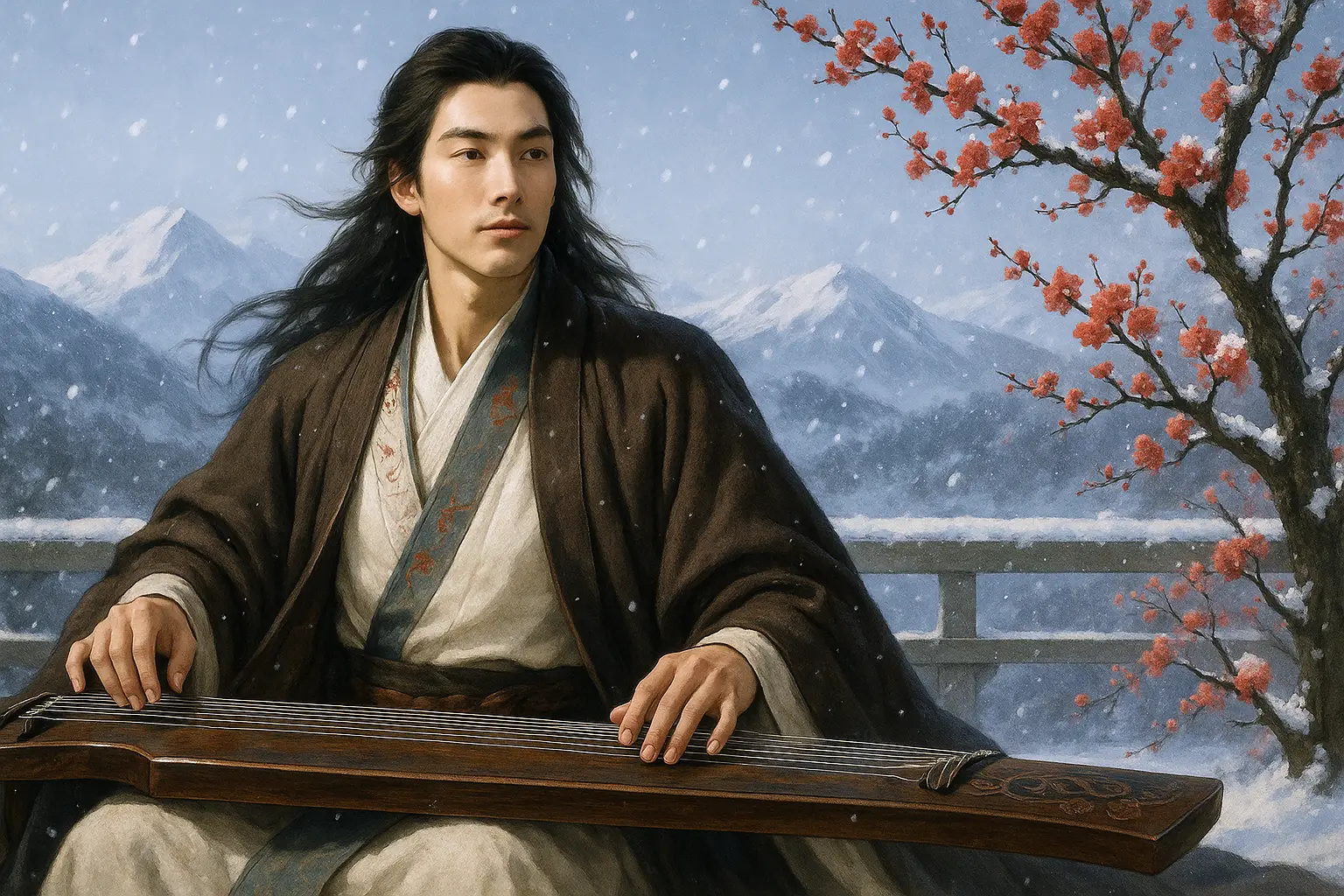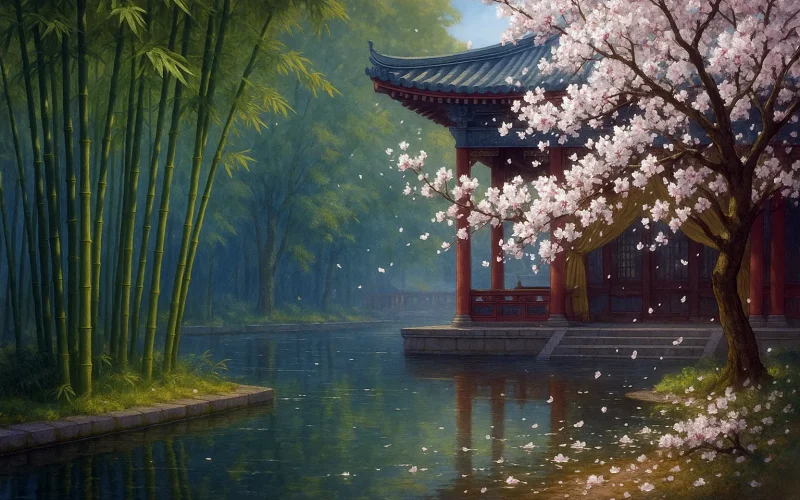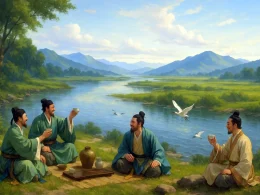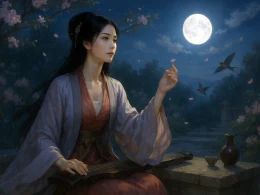The rising sun brightens the roving hall;
New-won water brims with the palace pool.
Back-flying clouds half enter the ridge tall;
New-fall'n drops still hang on branches cool.
Original Poem
「初晴应教」
虞世南
初日明燕馆,新溜满梁池。
归云半入岭,残滴尚悬枝。
Interpretation
This poem is a work composed by imperial command, known as "Yingjiao". The Tang Dynasty imperial court frequently held literary gatherings where emperors would command their ministers to compose poetry documenting events or describing scenes. "On the First Clear Weather After Rain" depicts a scene just after rainfall: the morning sun shines brightly, the palace gardens appear freshly washed, clouds retreat to the mountain ridges, and residual droplets cling to branches. Using concise and elegant language, the poet captures the refreshing and transformative beauty of nature. While created as an occasional piece, it harmonizes with Yu Shinan's characteristically pure and elegant style.
First Couplet: "初日明燕馆,新溜满梁池。"
Chū rì míng yàn guǎn, xīn liū mǎn liáng chí.
The morning sun illuminates the palace halls;
New streams fill the garden ponds to their brim.
"The morning sun" establishes the temporal setting - dawn after rainfall, with the sun newly risen. "Palace halls" refers to buildings within the imperial court or gardens, carrying connotations of harmony. The rainwater filling the ponds reflects a refreshed atmosphere. This couplet focuses on light and water, portraying the clear and bright scene following the rain. Light and moisture complement each other, creating a tranquil yet vibrant ambiance.
Second Couplet: "归云半入岭,残滴尚悬枝。"
Guī yún bàn rù lǐng, cán dī shàng xuán zhī.
Returning clouds drift halfway up the mountain ridges;
Lingering raindrops still hang from the branches.
"Returning clouds" depicts the remaining clouds moving toward the mountains, suggesting motion within stillness. "Lingering raindrops" vividly captures water beads suspended on branches. This couplet combines near and distant views: in the distance, clouds envelop the ridges; nearby, droplets glisten on twigs. The layered scenery embodies both the lively freshness after rain and nature's profound tranquility.
Holistic Appreciation
Though merely twenty characters long, the poem constructs a complete picture of the scene after rainfall. The first line emphasizes light and moisture, establishing the overall atmosphere; the second line focuses on returning clouds and lingering droplets, capturing delicate details. The distant mountains and nearby branches, cloud shadows and raindrops interplay to form a clear and ethereal image. As an occasional poem, it contains no direct praise of the emperor, yet through the depiction of clearing weather, it implies "renewal of all things," aligning with the court's appreciation for harmony and clarity. The simple yet profound language demonstrates Yu Shinan's subtle and elegant artistic style.
Artistic Merits
- Vast Conception in Compact Form: Within two couplets, it portrays the bright morning sun, lingering droplets, and returning clouds. Though describing small details, it achieves expansive artistic conception.
- Integration of Near and Distant Views: The composition skillfully balances mountain ridges with branches, clouds with raindrops, creating distinct layers and a three-dimensional quality.
- Dynamic-Static Equilibrium: The drifting clouds and suspended droplets create a poetic contrast between movement and stillness.
- Refined Elegance: The unadorned yet fresh language creates strong visual imagery, embodying Yu Shinan's characteristically pure and elegant style.
Insights
This brief poem reveals how nature's most captivating moments often occur just after rain clears. When the world turns bright, clouds return to mountains, water droplets sparkle, and everything feels renewed. Similarly in life, maintaining clarity and peace of mind through difficulties allows us to appreciate the tranquility and hope of "first clear weather." By capturing nature's subtle transformations, the poet reminds us that life's beauty often lies in fleeting moments - the key is to perceive it with an attentive heart.
About the Poet

Yu Shinan (虞世南 558 - 638), a native of Yuyao in Zhejiang Province, was a prominent statesman, writer, calligrapher, and politician during the Zhenguan era of the early Tang dynasty. As one of the "Twenty-Four Meritorious Officials of Lingyan Pavilion," he rose to the position of Director of the Imperial Library. His calligraphy earned him a place among the "Four Great Calligraphers of the Early Tang," alongside Ouyang Xun, Chu Suiliang, and Xue Ji. In poetry, he inherited the tradition of Xu Ling and pioneered a refined, balanced, and harmonious courtly style. He also compiled the North Hall Book Excerpts, establishing a new genre of encyclopedic literature.












